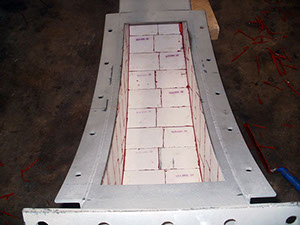Refractory Science
Refractory Science in Westlake, LA
Refractory science is a branch of the natural sciences. These seek to explain the rules that govern the interactions of the natural world through scientific methods. A key component within the natural sciences is the principle of thermodynamics; meaning thermal, or heat change, this branch of natural science concerned with heat and its relationships to energy and work.
Thermal equilibrium as a technical term in thermodynamics relates to a system, and the temperature within the system, specifically whether it is spatially and temporally uniform. Thermal equilibrium as a relation between the physical states of two bodies means that there is actual or implied thermal connection between them, through a path that is permeable only to heat, and that no energy is transferred through that path. This technical sense is concerned with the theory of the definition of temperature.
Any material that has a relatively high equilibrium condensation temperature is called refractory.
The refractory group includes elements and compounds like metals and silicates (commonly termed rocks) which make up the bulk of the mass of terrestrial planets, and a smaller proportion of the mass of asteroids, giant planets and their moons.
R&H selects and works closely with refractory manufactures to choose the ideal refractory for our customers. The refractory selection is based on a wide variety of variables such as safety aspects, durability, chemical exposure, thermal exposure, expense, installation restrictions, installation methods, anchoring system, and life expectancy.
Refractory technology has progressed through the years. On some occasions either run time requirements, or an inability to shut the unit down time has required the development of hot installation methods to supersede the refractory’s normal selection process. R&H has used hot installation methods installing refractory and it has surpassed its expected performance.
Quick Contact Form

